- Home
- James Rollins
The Seventh Plague Page 15
The Seventh Plague Read online
Page 15
“So lots of bad press,” Kat said.
“That HAARP could never fully shake.”
“But what does any of this have to do with Aurora Station?” Monk asked.
“Aurora Station is basically HAARP reborn, only on a much bigger scale. Its antenna array is tenfold larger, its technology beyond cutting edge. And being privately owned versus run by the military, the place has garnered less attention, especially due to its remoteness. Because of this, DARPA has been quietly funding part of the project, in order for HAARP’s experiments to continue away from the public eye.”
Kat understood Painter’s interest in this project. Before becoming director, Painter’s area of expertise with Sigma had been in high tech, basically anything with an on/off button. Not only had he earned a PhD in electrical engineering, but he also held several patents.
Painter transferred an image onto the wall monitor behind him. It was the familiar logo for the corporation running Aurora Station. It depicted an egg inscribed with scientific nomenclature that was about to tip over.
“This pretty much tells you everything you need to know about the company and its CEO, Simon Hartnell,” Painter said. “In fact, it’s his involvement that likely further insulated the facility from public scrutiny.”
“Why?” Monk asked.
“With all of his charity work, he’s developed a sterling public persona. Plus everyone uses his tech. From his fast wireless chargers to his powerful batteries. With all of that goodwill, no one’s accusing him of building a mind-control device.”
Monk scrunched up his brow. “But what did you mean about that egg telling us everything we needed to know about the man?”
Painter glanced over his shoulder at the Clyffe Energy logo. “It’s supposed to represent the Egg of Columbus.”
“Which is what?” Monk asked.
“According to a story, Columbus once claimed he could balance an egg on its tip and challenged his critics to do the same. When they tried and failed, he took the egg and cracked its end atop a table, thus flattening its bottom. This, of course, allowed the egg to sit upright.”
“In other words, he cheated,” Monk said.
Kat scowled at him. “The story is intended to be a lesson on creativity, about thinking outside the box to find a solution to a seemingly impossible problem.”
“Which pretty much encapsulates Simon Hartnell’s philosophy,” Painter said. “But the logo also has an additional layer of significance. Hartnell considers himself to be the intellectual heir to the inventor Nikola Tesla, practically worships the guy.”
Monk waved to the logo. “But what does this obsession have to do with that egg?”
“At a world exposition in 1893, Tesla set out to repeat Columbus’s accomplishment, only this time scientifically. He set a copper egg to whirling within a rotating magnetic field. The gyroscopic forces along its major axis turned the egg up on its end, spinning on its tip. Thus winning Columbus’s centuries-old bet.”
“And without cheating,” Monk added, sounding impressed.
“Columbus didn’t—” Kat gave up and waved to Painter. “What exactly is Clyffe Energy doing with that expanded facility in the Arctic?”
“A slew of new projects. Like mapping the shift of the magnetic north pole. Or testing plasma clouds in the upper atmosphere. But the main emphasis is on studying climate change. The facility is using ELF and VLF signals—transmissions normally used to communicate with submarines—to monitor the thickness of the Arctic ice pack.”
Kat felt a twinge of concern. “That’s becoming a huge industry up north.”
“And a political firestorm to boot,” Painter said. “With the Arctic melting, the wealth of resources under all of that ice has become a territorial free-for-all. Canada, Russia, Denmark are all fighting to stake out claims. It won’t be long before someone pushes someone else too far.”
A scuffle of feet sounded behind them, followed by an urgent knock on the office door. Jason Carter pushed into the room. “You all gotta see this.”
2:39 P.M.
Painter shifted to the side, allowing the young man access to his computer. He could tell the kid was worked up about something.
Jason spoke as he worked. “Kat asked me to look into that base up in the Arctic. Everything in that region is under surveillance. Military satellites, NOAA weather stations. Canada’s Northern Watch program has drones in the air, on the ice, and under the water, monitoring traffic throughout the region to protect their interests. It’s getting to be that a polar bear can’t fart up there without triggering a seismic sensor.”
“Jason . . .” Kat warned.
“I know, I know. Give me a second.”
Painter shared a look with Kat, silently acknowledging how Jason’s observations dovetailed into their prior discussion.
“I thought,” Jason continued, “why not take advantage of all that surveillance? So I set up a search protocol around Aurora Station, specifically for the twenty-four-hour period following the abduction of Dr. al-Maaz.”
Painter clenched a fist.
“And I found this on a Norwegian Polar Institute satellite.”
Jason transferred a video clip to the room’s third monitor. The footage showed a grainy overhead view of a helicopter sitting on a stretch of snow and black rock. The rotors spun, and small figures labored around the aircraft. Then a closed stretcher was hauled out of the cargo hold and carried toward a cluster of boxy buildings.
Jason glanced to Painter. “I couldn’t get a look at whoever was being transported. But it seems odd that someone is being medevacked to that remote base.”
Painter pictured the tranquilizer darts striking Safia, the shock on her face, her hand lifting toward him in a silent plea for help.
“What do you think?” Jason asked.
The fury smoldering for days inside Painter erupted. His vision narrowed, his throat tightened. He couldn’t speak. He simply stared as the footage looped again. He watched the stretcher being whisked away, vanishing into the building.
“Sir?” Kat pressed.
“I’m going out there,” he said tersely, barely able to unclench his jaw.
“Someone should,” Kat agreed. “But we have others who—”
“I’m going.” Painter turned his back on the screen and faced the others. He took a deep breath, but his features remained stony. “DARPA has a vested interest in Aurora Station. It’s high time that place had an inspection.”
Kat studied him, clearly running the merits of his plan through her head. “I suppose we could get General Metcalf at DARPA to orchestrate such a cover story.”
“Still, to pull it off, it would take someone with a solid tech background.”
“Like you.” Kat glanced to Monk. Both of them were clearly concerned about his personal stake in all of this. Finally, Monk gave Kat a small nod, and she faced Painter again. “Then I’m going with you.”
“It’s better if I—”
This time Kat cut him off. “You go, I go.” She waved to Jason. “Carter can hold the fort. And if need be, Monk can help him from the field.”
“Not a problem, sir,” Monk said.
Painter recognized he needed Kat’s cooperation for any chance of rescuing Safia. He might be Sigma’s director, but in many ways, Kat was the true puppet master here.
Accepting this reality, he nodded. “Then grab your parka.”
13
June 2, 7:18 P.M. EAT
Khartoum, Sudan
As the sun sank away, Gray stood at the headwaters of civilization.
The spit of parkland lay between two rivers. To his left, the White Nile rolled sullenly past his position, churning with chalky clay, which gave the waterway its name. To Gray’s right, the Blue Nile streamed past in a thinner black course.
But it was what lay before him that held him transfixed.
The two tributaries wove together, mixing their waters, merging to form the lifeblood of this region: the Nile River.
He gazed down its length as it snaked north toward Egypt. He could feel the agelessness of this place, accentuated by the haunting call to evening prayers echoing across Khartoum. Overhead, a sickle moon hung in the twilight skies, reflecting in the dark waters like a set of silvery bull’s horns.
Seichan joined him and slid an arm around his waist. He recalled her suggestion in Cairo, that they simply cast everything aside and take off. He felt that pull even stronger in this timeless moment.
She sighed next to him, as if sharing this reverie, but knowing it could not be—at least not yet. “Kowalski called in,” she said, drawing his attention to the present. “He’s on his way back with our transportation. Should arrive in another ten minutes.”
Painter and Kat had arranged a vehicle sturdy enough to take them into the deep desert. Kowalski had gone to collect it, along with food, water, and extra diesel. Where they were headed next, they’d be on their own.
Hopefully.
Seichan had shown him the photo Kat had sent, of a glowering woman with white hair and dead eyes. Back in Ashwell, Seichan had only managed to get a glimpse of the assassin’s face, so she couldn’t be sure it was the same woman.
Still, following that encounter, Seichan remained more wary, her gaze always moving. To spook someone like Seichan, this woman must be big trouble.
A bright laugh rang out behind him—coming from above.
He looked back. A small Ferris wheel turned a few yards away, part of a tiny amusement park, which took its name—al-Mogran—from its location, meaning “confluence.”
He stared up at Derek and Jane as they rode round and round, their heads bowed together, smiles on their faces. While it wasn’t the wisest way to occupy their time, maybe it was for the best, especially considering what lay ahead.
The team had landed two hours ago in Khartoum. The late afternoon had been unbearably hot. The plan had been to set out after sunset, when the desert temperatures plummeted. The first leg of their journey was a seventy-mile trip to the south, to the small village of Rufaa, where the family who had found Professor McCabe lived. They were currently under quarantine because of their exposure to the sick man, but a local villager—one of that family’s cousins—had agreed to serve as a guide and take them into the desert.
The Ferris wheel slowed to a stop and began to unload its riders. Seichan stood to the side, studying the darkening park for any threats.
Gray met Derek and Jane as they climbed off. They both looked more relaxed, years younger in fact. Derek helped Jane out of her seat, holding her hand. His grip lingered a little longer than necessary.
“That was fun,” Jane said. “You could see for miles all around.”
Derek nodded. “I had hoped to spot the site of the new dam construction, where all of this trouble started. But it’s too far away, about a hundred miles to the northeast.”
Gray knew the project—located at the Nile’s Sixth Cataract—was where Professor McCabe’s survey team had started its fateful journey two years ago. The group had vanished into a harsh terrain of broken rock, blowing sand, and towering dunes, a desolate landscape that covered thousands of square miles.
And we’re about to head out there ourselves.
Gray got them all moving. “Kowalski should be here soon. Let’s get back to the street.”
As they crossed the amusement park, Jane glanced back toward the silvery confluence of the two rivers. “I’ve read so much about this region, but to see it for yourself . . .”
Her eyes were wide with wonder.
Gray was reminded of how truly young she was, only twenty-one. While clearly smart, most of her education must have come from classrooms and libraries, seldom from fieldwork. Still, after everything that had transpired, she was holding up remarkably well.
He stepped alongside her.
“Jane, as we’re about to follow your father’s footsteps out into the desert, maybe we should know more about the theory he was trying to prove. You mentioned before that most archaeologists found his theories about the Book of Exodus to be controversial.”
“Not just archaeologists, but also Jewish rabbis.” Jane looked down as she walked, clearly uncomfortable discussing this, but she went on. “Many people believe the story of Moses to be allegorical, rather than historical. They base this decision on the fact that the real-life Ramesses the Great is mentioned in the Book of Exodus, but because there’s no archaeological evidence of a plague or slave revolt during his reign, they dismiss the story of Moses as a fairy tale.”
“Sounds cut and dry, so what’s your father’s take on this?”
“He—and several colleagues—questioned some inconsistencies found in the Book of Exodus concerning the name Ramesses, calling into question if Ramesses the Great was truly the pharaoh who Moses cursed with his ten plagues. It’s all rather complicated.”
“But why does that matter?”
“It matters because it allows archaeologists the freedom to look elsewhere for evidence of Exodus and not be pinned down to the reign of Ramesses the Great.”
“And with this newfound freedom, did your father and his colleagues find anything?”
“They found everything.” She stared toward the distant desert hills. “If you look to an era four centuries before Pharaoh Ramesses, you discover all the missing archaeological evidence for Exodus.” She ticked items off on her fingers. “A town of Semite slaves. Signs of a massive plague. The frantic emptying of the city. There’s even a crypt discovered that bears a striking resemblance to the tomb of Joseph that’s described in the Bible. It all lines up.”
“And this is what your father was trying to verify?”
“It’s called the New Chronology. He believed if he could find proof of a series of great plagues from around that time, then he could authenticate this theory.”
No wonder the man was so obsessed with the biblical plagues.
Jane sighed, clearly no longer wanting to talk about it, which was just as well.
By now, they had reached the street bordering the park.
It appeared Kowalski had beaten them here. At the curb, a large truck idled heavily, as if out of breath. It was a reconditioned dark green Mercedes Unimog, a true beast of a four-wheeler. It had a wide-framed double cab with a small open bed in the back, all sitting atop hip-high tires with aggressive treads. It was a vehicle built to eat through the toughest terrain. And if it ever bogged down, the truck came equipped with a large winch on its front bumper to help haul itself out of trouble.
Kowalski sat behind the wheel, his elbow resting on the sill of the open window, cigar smoke wafting out. “Now this is a truck,” he grunted, slapping the outer door with his palm.
Gray understood Kowalski’s affection. The pair made the perfect match. Both were slow, loud, and somewhat crude.
Seichan waved everyone aboard, but she kept watching the streets.
“We good?” Gray asked her.
“For now.”
Then that’ll have to do.
8:08 P.M.
In the truck’s backseat, Derek worked on his iPad.
After forty-five minutes riding south along a two-lane road that hugged the curves of the Blue Nile, Derek had lost interest in the passing landscape. They had left the bright lights of Khartoum far behind and were now traveling back in time. Most of the surrounding terrain was the same as it had been for centuries: dark tilled fields cut through by silvery irrigation channels, stands of palm trees, the hulking forms of idle water buffalo, the occasional mud-brick hovel.
But the Blue Nile was only a trickling shadow of the mighty flow that coursed north through Egypt, the source of that kingdom’s fertile bounty. The river here was less generous. The farmlands and plantings did not stretch as far, needing to huddle closer to the restrained river.
Derek could easily see low hills in the distance, limned in silvery moonlight, barren and empty. They looked like bent-backed old beggars, dying of thirst. Beyond those hills, a sun-blasted desert awaite
d them, spreading for thousands of miles.
To traverse it, they needed a plan.
This was what he focused on now—fine-tuning what had been discussed earlier. Once they reached the village of Rufaa, the team was scheduled to travel overland through the desert to where the professor was found. From there, the plan grew sketchy. But Derek had an idea.
Jane stirred beside him. The engine’s grumble, the rocking of the suspension, and the strain of the past few days had lulled her into a light slumber. “What are you doing?” she asked, stifling a yawn.
The iPad’s screen illuminated her face in a soft glow. He found himself transfixed by the fine curl of her eyelashes as she looked down at his work.
He cleared his throat. “I was trying to map a possible route for us. Or maybe I’m deluding myself.”
She leaned against his shoulder. “Show me.”
He was surprised at how much he wanted to share this with her. Plus it helped to talk it out.
“We know your father left from Nile’s Sixth Cataract with his survey team, only to reappear two years later hundreds of miles to the south, not too far from the village of Rufaa. Unfortunately no one knew where he was during that time or what route he and the survey team took through that trackless desert. But now, from the clue hidden in Livingstone’s old sketch of an Egyptian scarab, we might know where your father was drawn.”
He shifted his iPad so she could see. “I took a satellite map of the region and drew a line across the two tributaries of the Nile that corresponds to where Livingstone had split the river between the two scarab’s wings.”
He showed the result.
“I then connected a dashed line from the Sixth Cataract—where your father left from—to the village of Rufaa, where he ended up.” He tapped the X formed on the map where those two lines crossed. “I think this is where we should start looking.”
“That’s brilliant,” Jane said, placing a hand on his knee.
A second person concurred. “She’s right,” Gray said from the far side of the backseat.

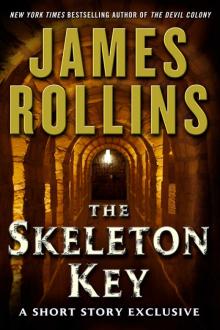 The Skeleton Key
The Skeleton Key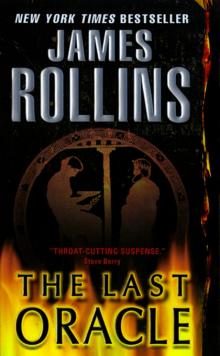 The Last Oracle
The Last Oracle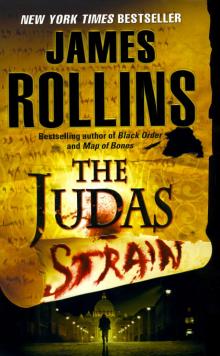 The Judas Strain
The Judas Strain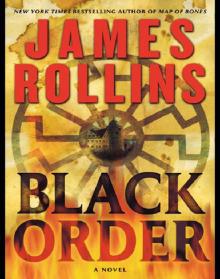 Black Order
Black Order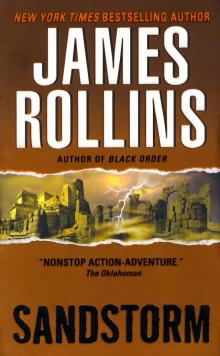 Sandstorm
Sandstorm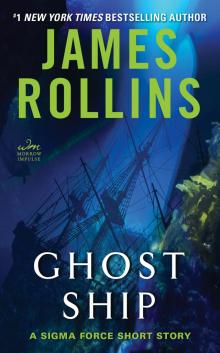 Ghost Ship
Ghost Ship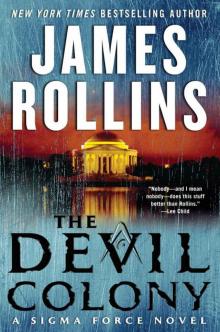 The Devil Colony
The Devil Colony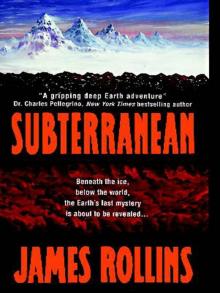 Subterranean
Subterranean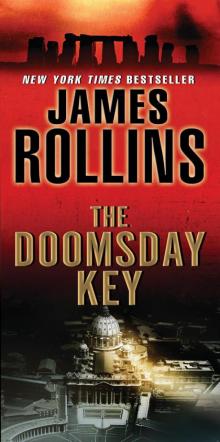 The Doomsday Key
The Doomsday Key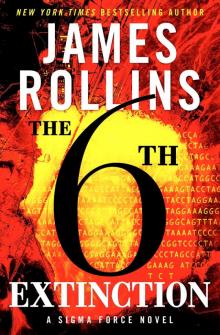 The 6th Extinction
The 6th Extinction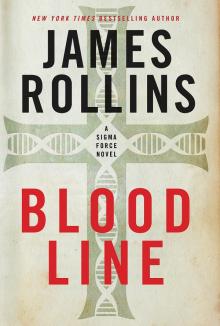 Bloodline
Bloodline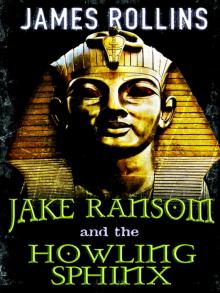 Jake Ransom and the Howling Sphinx
Jake Ransom and the Howling Sphinx The Midnight Watch
The Midnight Watch Map of Bones
Map of Bones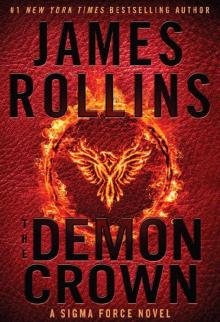 The Demon Crown
The Demon Crown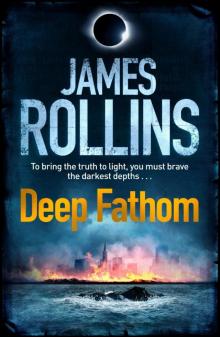 Deep Fathom
Deep Fathom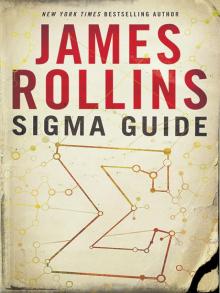 Sigma Guide
Sigma Guide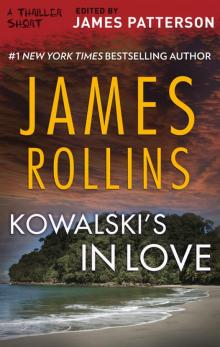 Kowalski's in Love
Kowalski's in Love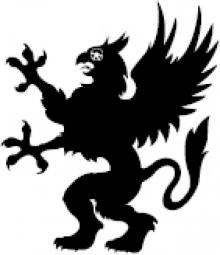 Jake Ransom and the Skull King's Shadow
Jake Ransom and the Skull King's Shadow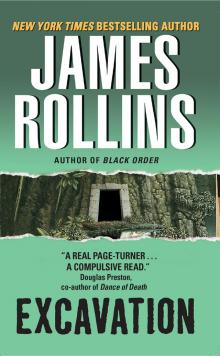 Excavation
Excavation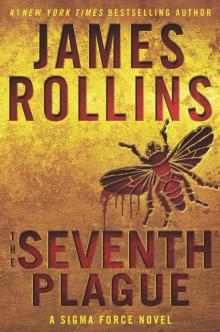 The Seventh Plague
The Seventh Plague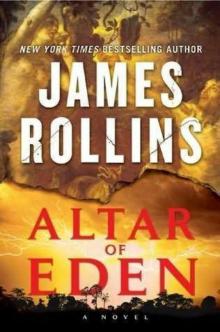 Altar of Eden
Altar of Eden Unrestricted Access: New and Classic Short Fiction
Unrestricted Access: New and Classic Short Fiction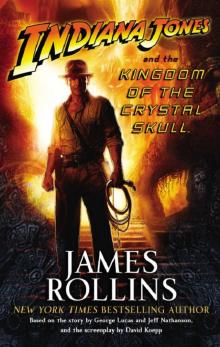 Indiana Jones and the Kingdom of the Crystal Skull
Indiana Jones and the Kingdom of the Crystal Skull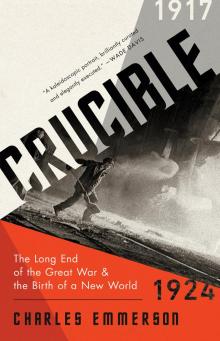 Crucible
Crucible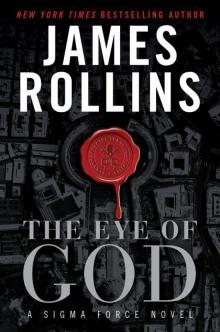 The Eye of God
The Eye of God The Bone Labyrinth
The Bone Labyrinth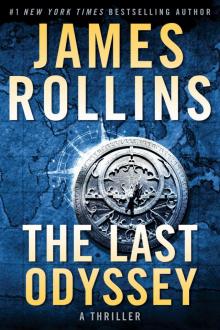 The Last Odyssey: A Thriller
The Last Odyssey: A Thriller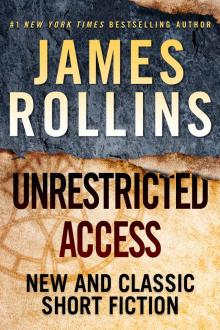 Unrestricted Access
Unrestricted Access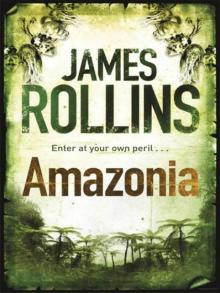 Amazonia
Amazonia Blood Brothers: A Short Story Exclusive
Blood Brothers: A Short Story Exclusive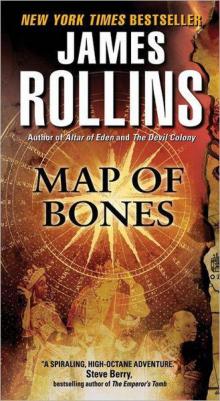 Map of Bones: A Sigma Force Novel
Map of Bones: A Sigma Force Novel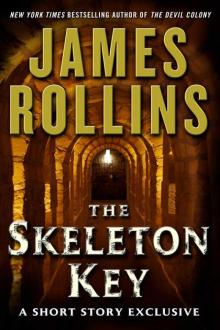 The Skeleton Key (sigma force)
The Skeleton Key (sigma force)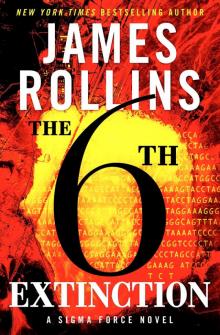 Sigma Force 10 - The Sixth Extinction
Sigma Force 10 - The Sixth Extinction Innocent Blood
Innocent Blood Map of Bones sf-2
Map of Bones sf-2 The Eye of God: A Sigma Force Novel
The Eye of God: A Sigma Force Novel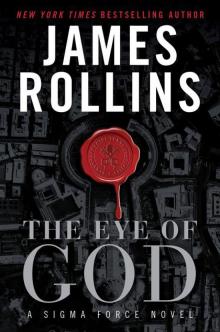 The Eye of God: A Sigma Force Novel sf-9
The Eye of God: A Sigma Force Novel sf-9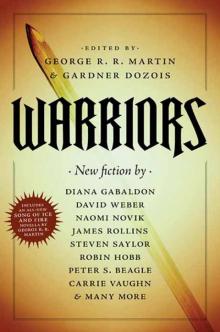 The Pit
The Pit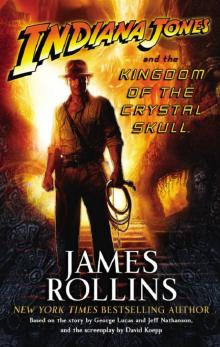 Indiana Jones and the The Kingdom Of The Crystal Skull
Indiana Jones and the The Kingdom Of The Crystal Skull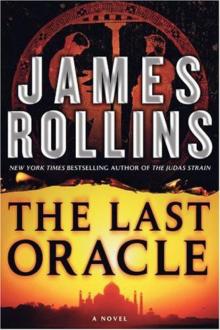 The Last Oracle (2008) sf-5
The Last Oracle (2008) sf-5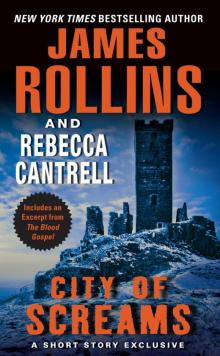 City of Screams
City of Screams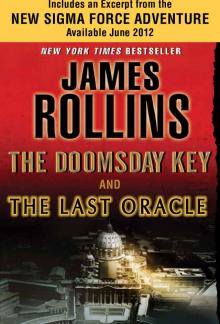 The Doomsday Key and The Last Oracle with Bonus Excerpts
The Doomsday Key and The Last Oracle with Bonus Excerpts The Judas Strain sf-4
The Judas Strain sf-4 Blood Infernal
Blood Infernal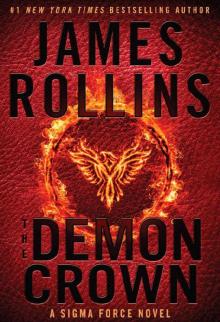 The Demon Crown: A Sigma Force Novel
The Demon Crown: A Sigma Force Novel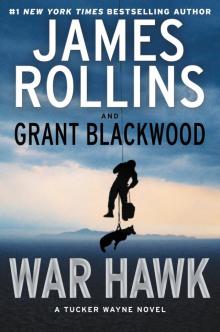 War Hawk: A Tucker Wayne Novel
War Hawk: A Tucker Wayne Novel SANDSTORM sf-1
SANDSTORM sf-1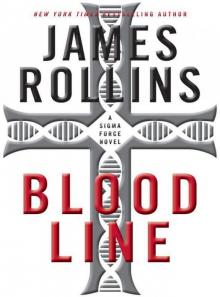 Bloodline: A Sigma Force Novel
Bloodline: A Sigma Force Novel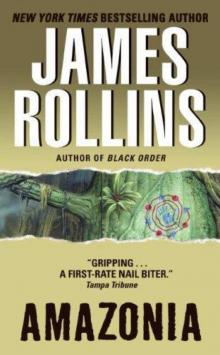 Amazonia: a novel
Amazonia: a novel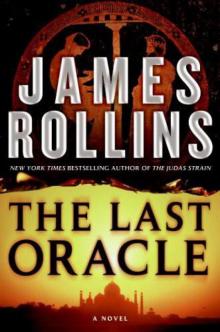 The Last Oracle: A Sigma Force Novel
The Last Oracle: A Sigma Force Novel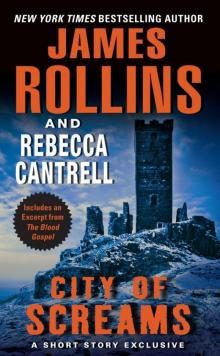 City of Screams (the order of the sanguines)
City of Screams (the order of the sanguines)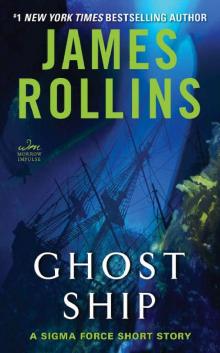 Ghost Ship: A Sigma Force Short Story
Ghost Ship: A Sigma Force Short Story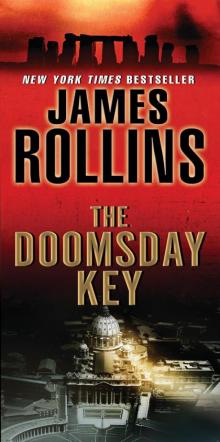 The Doomsday Key: A Sigma Force Novel
The Doomsday Key: A Sigma Force Novel